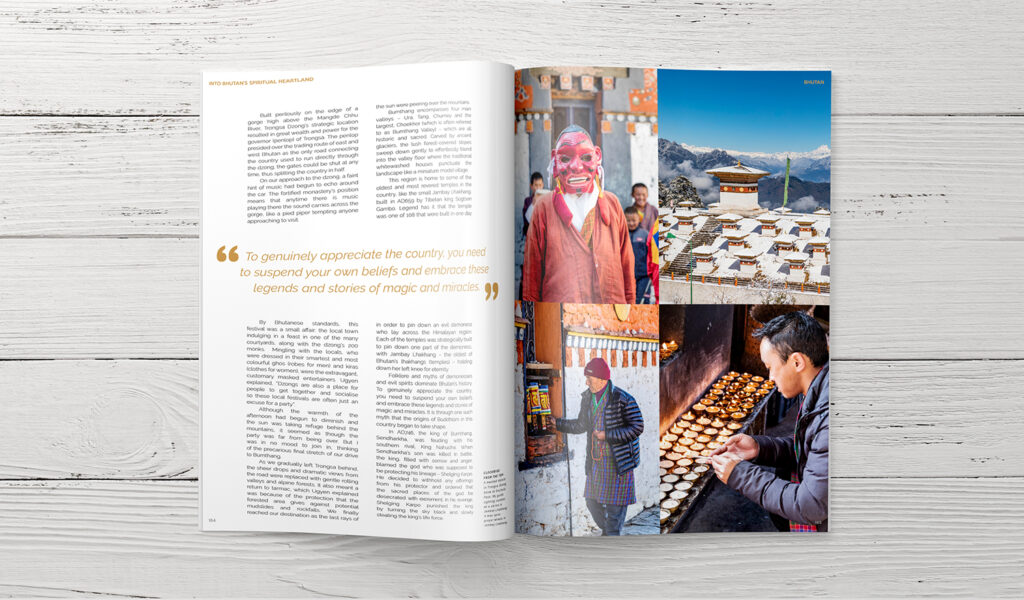
Whether it’s a digital magazine or a good old fashioned printed version, there’s something incredibly rewarding about seeing your photos published in a magazine. But getting your work published isn’t easy. I have worked a professional photographer for almost 20 years, and I am also the founder of a an award-winning travel magazine called JRNY. So, I have experienced being on both sides of the fence. What I can tell you is that with a little bit of knowhow you can increase your chances of getting work published greatly.
Have great photos
It might sound obvious, but if you want to get your photos published, it helps if they are great photos. For a Picture Editor or Art Director, your previous work is the first thing that they looked at. So, if you don’t have a selection of great photos, make it your priority to get some.
But also if getting your work published is what you want to do, then think about the type of photos that you would see in the publications you want to contribute to. Then put together a collection that fits their style. A magazine isn’t going to change their style for you, so I would suggest flicking through a copy of previous issues to get a better idea of the type of work they publish.
The first approach
The hardest part of getting your work published, is getting your foot in the door. Most publications have their tried and tested photographers and so your task is to ultimately get into that group. Once you have the trust of the Picture Editor you will often find that they keep on re-approaching you.
So your first approach is incredibly important. In my role on JRNY magazine, I see hundred of emails a month from prospective photographers wanting to work with us. I simply don’t have the time to reply to every single person. So, my biggest advice is first and foremost, just be a nice, courteous, and polite person. If you are rude the chances are, you will never hear back. If you don’t hear back after the first email, it’s fine to send a follow-up or two, and if you don’t hear back don’t take it personally. Try again when you have other work.
Edit ruthlessly
If you are lucky enough to hear back from the Picture Editor and are asked to send some photos for consideration, be ruthless in what you select.
One of the hardest parts of being a photographer is knowing when to ditch a photo that might be close to your heart but isn’t quite right for the publication you want to pitch to. This might be because the photo isn’t technically perfect (i.e. it’s slightly blurred or too much noise). Keep in mind that print is much more unforgiving and the quality of photos have to be better than when used online. So, if it’s not perfect, don’t send it.
Think like a designer
If you want to maximize your chances of getting work published, one of the best tips I can give you is to think like a designer. By adopting a designer’s mindset, authors/photographers can approach magazine or book marketing strategically and creatively. If you look through any magazine you will be able to group the types of photos into a few categories of how they are used. These might include:
• Cover shots
These photos will require space at the top for the title of the magazine and space around the main point of interest for other text like what is in that issue.
• Double page spreads
These shots tend to be for opening pages of a feature and so require space for copy and the main point of interest either on the left or right-hand side of the page (i.e. avoid the centre of the magazine known as the gutter).
• Single page shots
These are vertical shots that work as a full page photo but don’t have as much space around the point of interest or the top of the photo.

• Half and quarter page shots
These types of shots will be more focused on the story but are not necessarily the “wow” factor shots that would look good as full pages.
• The “fillers”
These shots tend to be simple compositions that work well in small sizes. So they might be close-ups or specific details.
When taking photos or even when selecting them from your existing collection, if you can think like a designer about where the images might be used you may just find that you naturally select more appropriate photos which will have a better chance of being used.
Target the right place
One of things that I learnt at an early stage in my career was that it’s impossible to work with every publication. They all have their own styles and requirements for the type of photo that will use. So instead of a scatter gun approach, really think about which publications that are right for your work.
For example if you have tons of wildlife photos target a wildlife magazine instead of a more generic travel magazine. Or if you mainly have sport photos you probably won’t have much luck with a wedding publication. If you can build up a small pool of magazines that are perfect for your work, you will find that your success rate will improve hugely.

About Guest Author: Kav Dadfar
Kav is the professional photographer and Founding Editor of JRNY Travel Magazine. An ultra-premium coffee table style bookazine that is available in print and digital and published three times a year. Each issue features some of the world’s best travel writers and photographers and is packed with inspirational travel features and photo essays from around the globe. The magazine was launched during the pandemic and its rise in UK travel publishing has been meteoric. After just one issue, the magazine won Travel Magazine of the Year in the UK and has since won several more awards. One of the things that makes JRNY so unique is its emphasis on photography which makes it a perfect inspiration for anyone who loves photography or travel.
Colorcinch members will receive free digital versions of 3 fantastic digital issues published in 2023 plus access to the three previous issues as well! Register today for free access to this award-winning magazine.








